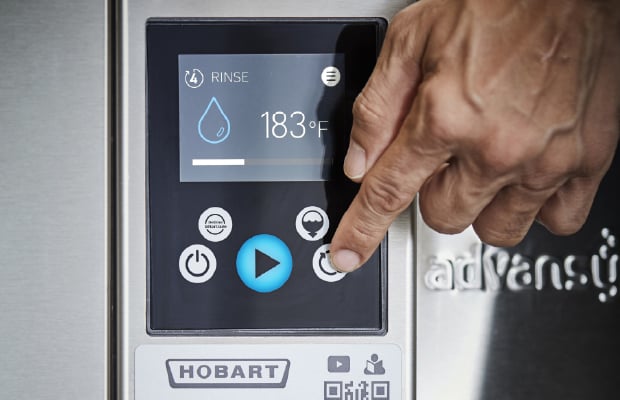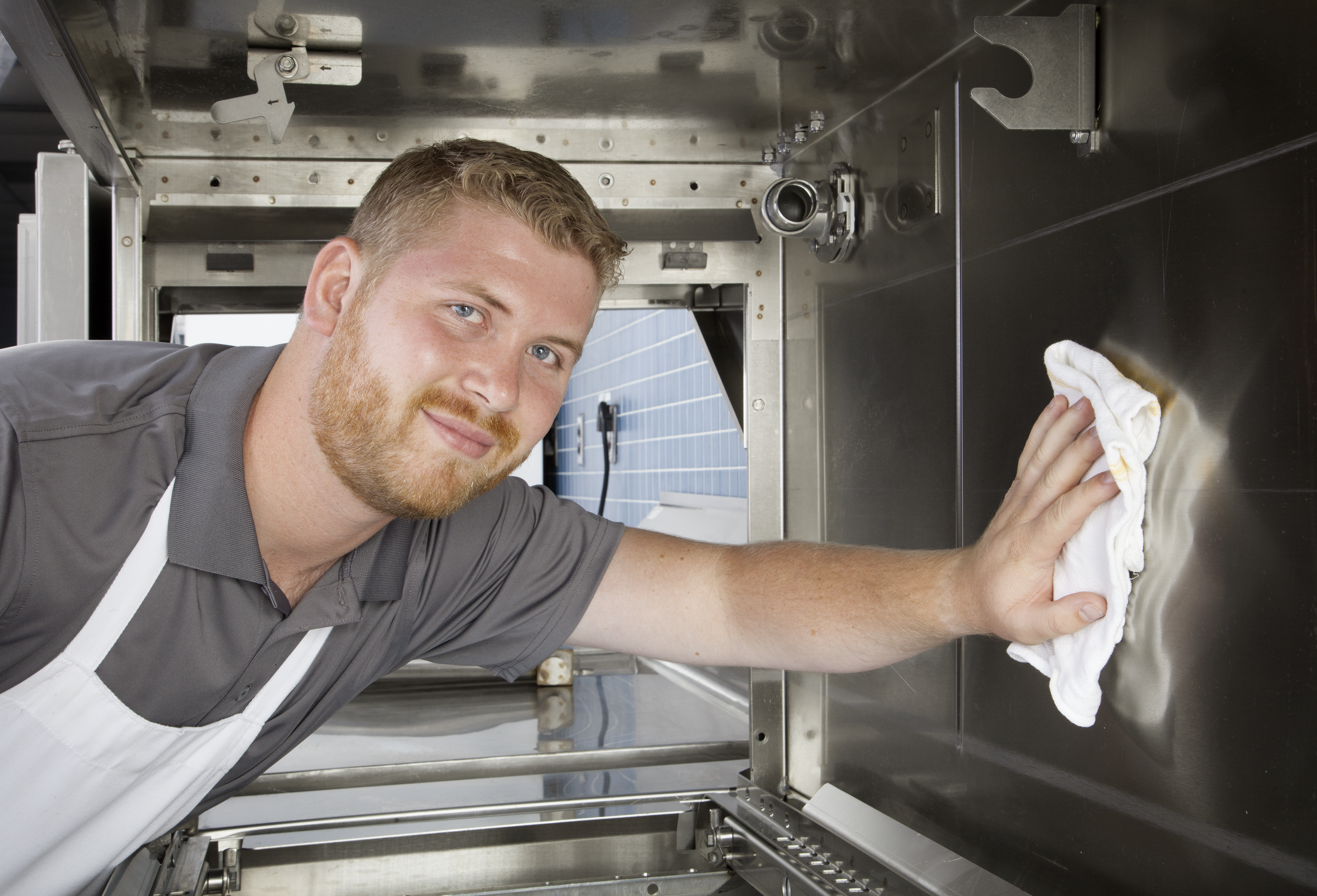How Water, Chemical & Energy Usage Impact the Cost of a Commercial Dish Machine
Unlike some other pieces of foodservice equipment, the cost of owning a commercial dishwasher goes beyond simply the price of the machine itself. How the machine consumes water, energy and chemicals can all have a profound effect on the cost of ownership over the lifespan of the machine. Having a dish machine that effectively balances these elements is essential to optimal performance and cost savings for your operation.
Water
The traditional three-compartment sink, which is still used by many operations for washing pots and pans (and everything else), has some major drawbacks when it comes to water usage, says Michael James, Sales Development Manager for Hobart Warewash. “If you don’t have a heater in [the wash tank] to keep it above 110º F., you’re going to be constantly dumping and refilling throughout the day,” he says. “So from a water consumption standpoint, you run into a lot of water usage.”
In a commercial dishwasher, the two main drivers for water consumption are the amount of water needed to fill the main wash tank and the water used in the fresh final rinse. In the “fill and dump”-type machine, fresh water is pumped in and drained out after each load. In a recirculating dish machine, water is reused for multiple cycles until it gets too dirty and can no longer be used. Additionally, some machines feature what’s known as a “maintenance fill,” according to Jim White, Applications Engineer for Hobart Warewash. During loads with large items such as hotel pans, the pans can carry water out of the machine. “That causes your maintenance fill to come on because you’ve lowered the water level,” White says.
Over the past few years, there has been a major push among manufacturers to reduce overall water consumption, James says, making older machines less efficient than new machines. “Legacy machines use 60 to 80 percent more water than the machines today,” notes James. “There’s a huge potential to save water over time with newer technologies.”
Energy
With increasing energy costs, operators must keep a watchful eye on their dishroom’s energy consumption. Dish machines use energy in heating the water for the wash tank and for heating a booster tank to ensure final rinse water doesn’t fall below 180º F to ensure proper sanitization.
Energy recovery systems are another way newer machines have an advantage over older models. These systems reutilize waste energy from the machine in two ways: by capturing the hot, steam-filled air that would normally be expelled by the exhaust system and by using the hot water being drained out to preheat cold water coming into the machine.
Chemicals
The amount of chemicals used in a dish machine has a direct correlation to the amount of water that the dish machine uses. In “fill and dump” machines, the amount of detergent used in each load stays fairly consistent. In recirculating machines, however, the detergent dosing gets a bit more complicated. Since the water is not being totally refreshed during each cycle, the concentration of detergent must allow the water to encapsulate soil, so that the soil is not redeposited onto the dishes. “You’re not adding as much fresh water, but that water might be a little bit dirtier,” says James.
Rinse aid usage is driven by the chemical company’s recommended usage amount. “That is a direct correlation,” James says. “The less rinse water you’re using, the less rinse agent you need to use.” Today’s machines, with their newer technologies, are using less rinse water, which means reduced rinse agent costs.
Totaling it Up
So, the cost of operation of a dish machine encompasses water, energy usage and chemicals, as well as the labor necessary to operate the machine. Obviously, anything that makes more efficient use of those factors means a reduced overall cost of ownership.
That’s where technology comes in, and the features on Hobart’s line of dish machines are the most advanced in the industry. But as James notes, “We don’t want to develop technology just for the sake of developing technology. We want a tangible benefit to the end user.”
One example of that technology that pays off for the user is the Automatic Soil Removal (ASR) system found on Hobart CLeN Advansys™ models. It actively pumps out food soil that was missed during pre-scrapping to an external basket. “We actually pump it out and remove it from the wash tank as the machine is in operation,” says White. This keeps the wash water cleaner for longer periods of time which reduces tank fills, and that can save money on chemicals, water and energy. The ASR system saves labor as well, White says. “If you have to do less tank draining, less cleaning and less refilling, that’s all basically time you could be doing something else,” such as front-of-house duties or closing activities.
End-user benefits like that are found in every Hobart dishwasher. Take the Hobart Advansys™ line of prep washers, for example. They feature an exclusive energy recovery system, which alone can save up to $1,500 annually in energy costs. The system also eliminates the need for a vent hood, allowing more opportunities for machine placement and savings. Sense-A-Temp™ technology ensures that the final rinse temperature maintains 180º degrees F. for consistent sanitization. An automatic deliming system makes maintenance easier than ever and provides added water and chemical savings. Available in 10- and 20-pan capacities, the Advansys prep washers deliver unprecedented performance and savings.
Those are just a few of the reasons why Hobart Advansys machines have received the National Restaurant Association's Kitchen Innovation and What's Hot! What's Cool! awards, the FCSI Innovative Product of the Year award, Energy Star Partner of the Year – Sustained Excellence award and the Best in Class award from Foodservice Equipment & Supplies magazine for 17 consecutive years.
And that’s why more and more operators choose Hobart dish machines to help them run their dishroom operations more efficiently. Contact Hobart today and receive a free cost of ownership audit to see how much a new machine can save you.





.png)


%20proc%20%20(1).jpg)


